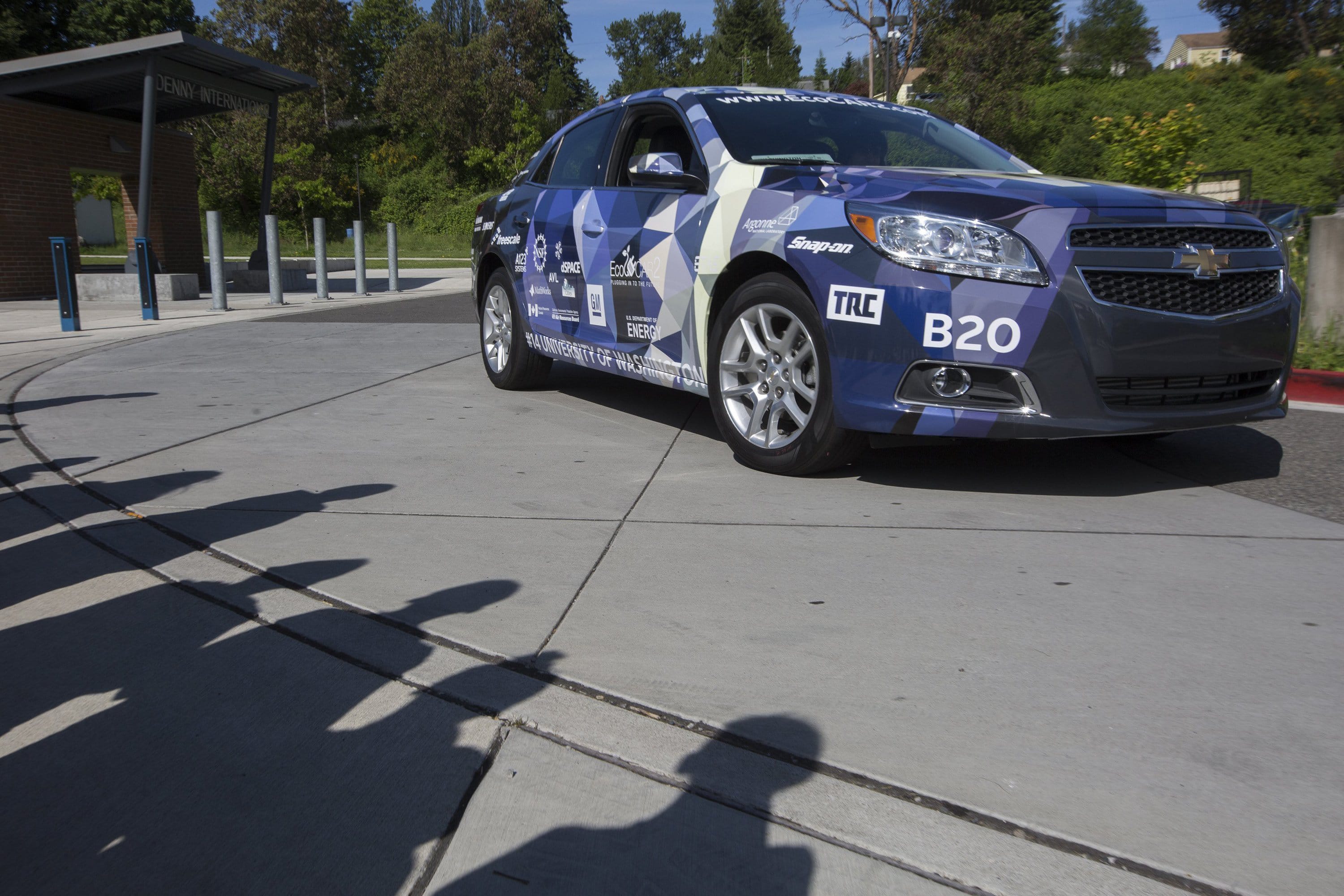SEATTLE — On the outside, it’s a basic, affordable, midsize Chevy Malibu.
But on the inside it’s a hybrid like no other, with two separate engines — one biodiesel, the other electric — that together give it the muscle of, well, a muscle car, not the faint and tentative speed of some hybrids.
For the last three years, a team of University of Washington students has designed, planned, tested, rebuilt, rewired and re-engineered the innards of the General Motors car.
Last week the team showed it off at Denny International Middle School, where sixth-graders in teacher Ben Evans’ science class swarmed around the car parked in front of the school, and peppered UW students Ryan Mallory and Jake Garrison with a hundred questions.
How much could you sell it for? How long did it take to make it? What’s that red button? What if it doesn’t work?
The Malibu has two separate engines: the biodiesel engine in the front of the car, which drives the front wheels; and the 250-horsepower electric motor in the rear of the car, powered by an 800-pound battery pack.
This week, the Malibu will be shipped on a flatbed truck to Michigan for further testing. GM will pick a winner, and the hybrid cars will then be trucked to Washington, D.C., where students will talk to industry leaders about their experiences.
“I think our team’s on track to do pretty well this year,” said UW mechanical-engineering student Trevor Crain, team project leader. In year two of the competition, the UW team came in fourth overall and won a top award for best energy consumption and lowest emissions.
For all of its success, the Malibu is a learning tool, not a vehicle that could one day go into production. The point of the competition is to train students at universities across the country how to design the cars of the future. Graduates of the EcoCAR competitions “are very experienced, very professional and can tackle really difficult problems,” Crain said.
For those who compete, being part of the team is often a direct track to good jobs in the auto industry. Several recent UW graduates who were part of the EcoCAR 2 team are now at GM and Tesla, the California company that manufactures high-end electric cars.
As part of the competition, GM supplied each of the schools with a car, as well as proprietary software and other equipment needed for the design work that is valued at $50 million. But the actual parts that went into the car — including the battery pack and two new engines — probably totaled about $200,000, Garrison said.



